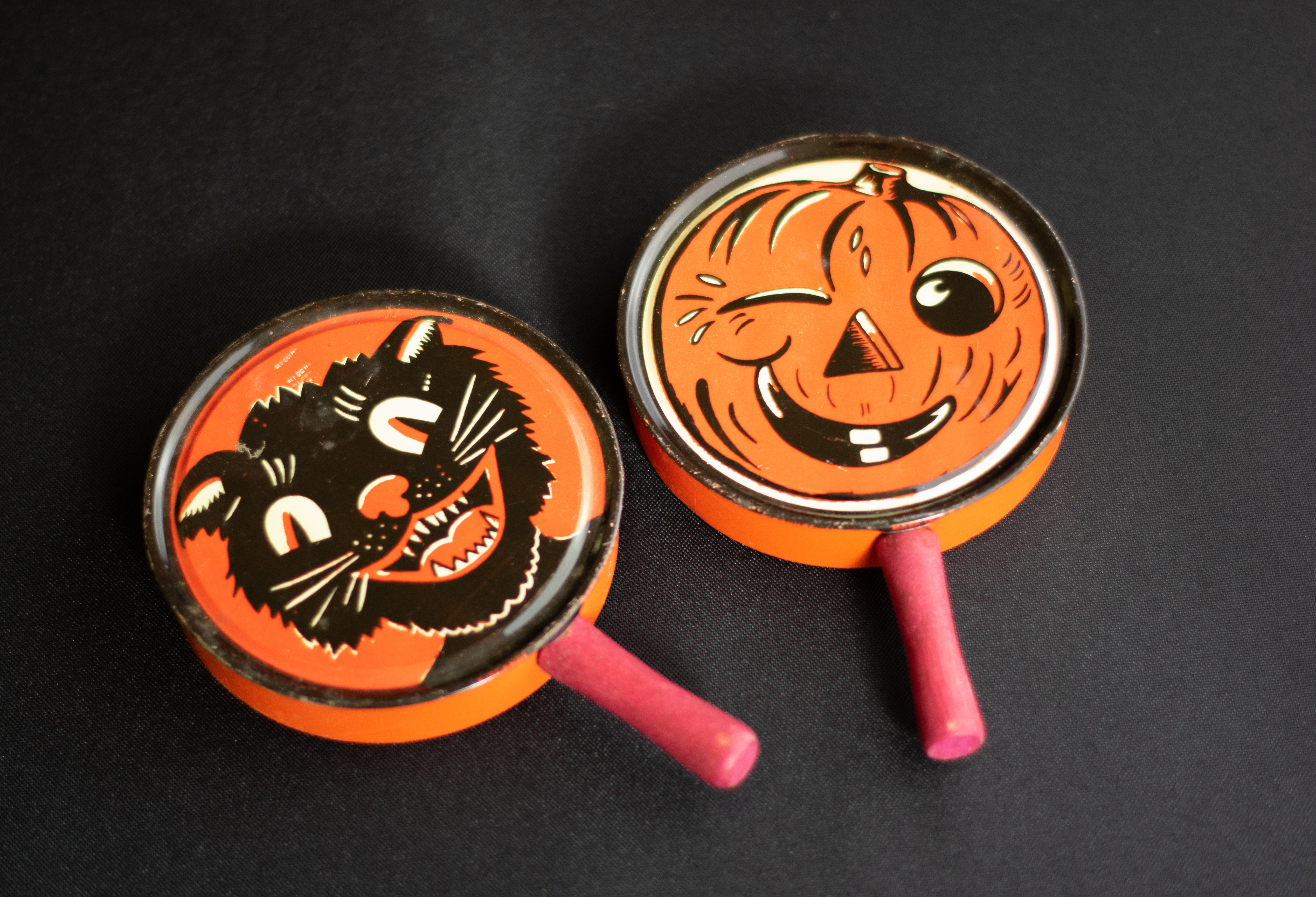
Hauntingly Iconic: The Evolution of Halloween Toys and Collectibles Through Pop Culture

Hauntingly Iconic: The Evolution of Halloween Toys and Collectibles Through Pop Culture
Dive into the shadowy corners of fun and nostalgia with our latest blog post that unravels the enchanting world of Halloween-themed toys and collectibles. From the spine-tingling appeal of spooky toys to the irresistible allure of Halloween night collectibles, we explore why these items capture the hearts of both the young and the young at heart.
Join us as we delve into the fascination surrounding these vintage Halloween collectibles, as we trace halloween toys history and discover what makes them a must-have for enthusiasts and collectors alike.
Whether you’re a seasoned collector or simply curious about the charm of Halloween-themed treasures, this post promises to uncover the magic and mystery that these items hold.
Origins of Halloween Haunts and Their Impact on Collectibles
Discover the historical roots of Halloween and how they influenced the creation of themed toys and collectibles.
Halloween’s origins can be traced back to the ancient Celts’ Samhain festival, a celebration marking the end of the summer harvest. This time of year was considered a liminal period when the boundary between the living and the dead became blurred, allowing spirits to traverse the earth.
As Christianity spread across Europe, by the 8th century, Pope Gregory III designated November 1st as All Saints Day, a time to honor all saints and martyrs. This new Christian holiday incorporated some of the traditions of Samhain. Eventually, the night before All Saints Day became known as All Hallows Eve, or Halloween as it is called today.
The fusion of these celebrations contributed to Halloween’s rich tapestry of traditions and motifs, such as carving Jack O’Lanterns, sightings of spirits or ghosts, the thematic use of black cats, donning scary faces and costumes, and lighting candles and bonfires. These activities were often accompanied by pranks and the sharing of candies.
The creation of Halloween-themed toys and collectibles began in earnest in the 1910s, when American companies started mass-producing decorations and toys catering to the Halloween market. Early products featured postcards, paper mache lanterns, candy boxes, costumes, accessories, and party decorations such as napkins, invitations, cards, treat bags, signs, and noisemakers.
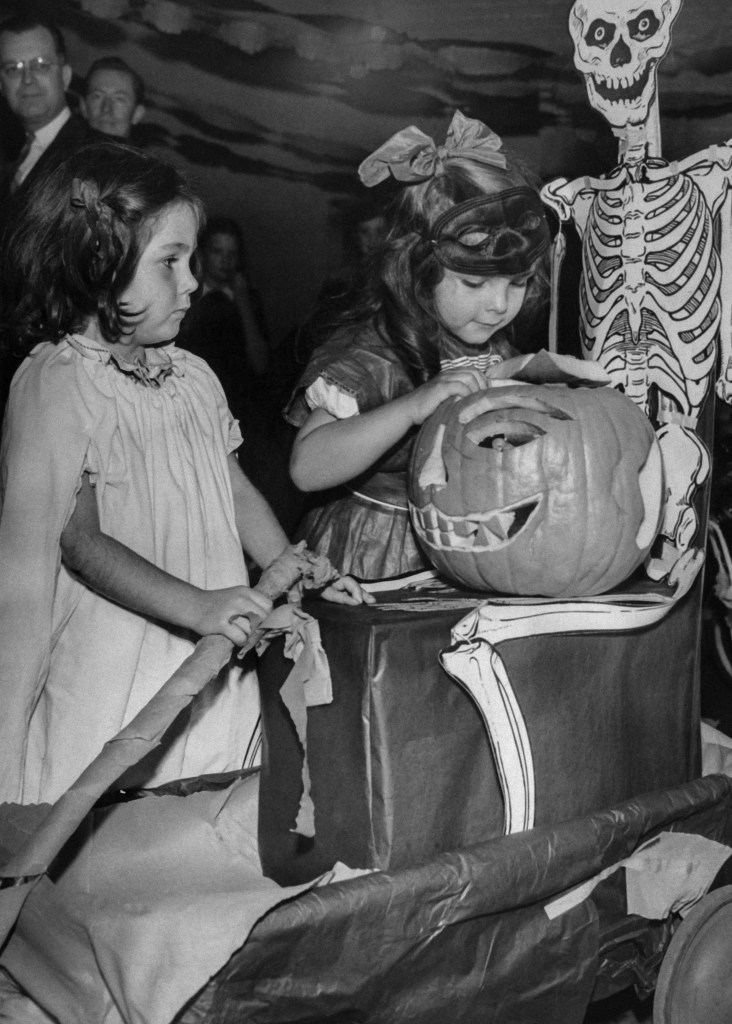
Early Halloween Tricks: From Simple Crafts to Spooky Novelties
Exploring the realm of early Halloween toys and collectibles unveils a fascinating journey through simple crafts and novelty items that have enchanted generations.
These items, ranging from vintage Halloween crafts to spooky novelties, vividly depict the holiday’s evolution. The rich history of vintage Halloween collectibles, especially those with a retro flair, provides a window into yesteryear’s celebrations and cultural practices.
The origins of the toys and collectibles we cherish today can be traced back to the Halloween parties of the early 20th century, which were predominantly adult-oriented. These gatherings focused on social games such as bridge or mahjong, with Halloween-themed decorations setting the eerie atmosphere. Prizes, often in the form of candy containers or lanterns, were awarded to the victors, adding a collectible dimension to the festivities.
Notably, the Bogie Book, published by the Dennison Manufacturing Company, played a pivotal role in setting the trends for these gatherings, serving both as a guide and a marketing tool.
As time progressed, the tradition of trick-or-treating took a more family-oriented turn, embedding itself as a key component of Halloween culture. During the 1940s, the imagery that now defines Halloween. From menacing Jack O’ Lanterns to broom-riding witches, the devil, veggie people, and flittering bats. This era aimed to instill a sense of spookiness and fright, guiding the aesthetic for collectibles. Encountering a Halloween collectible that sends a shiver down your spine is likely an authentic piece from this spooky era.
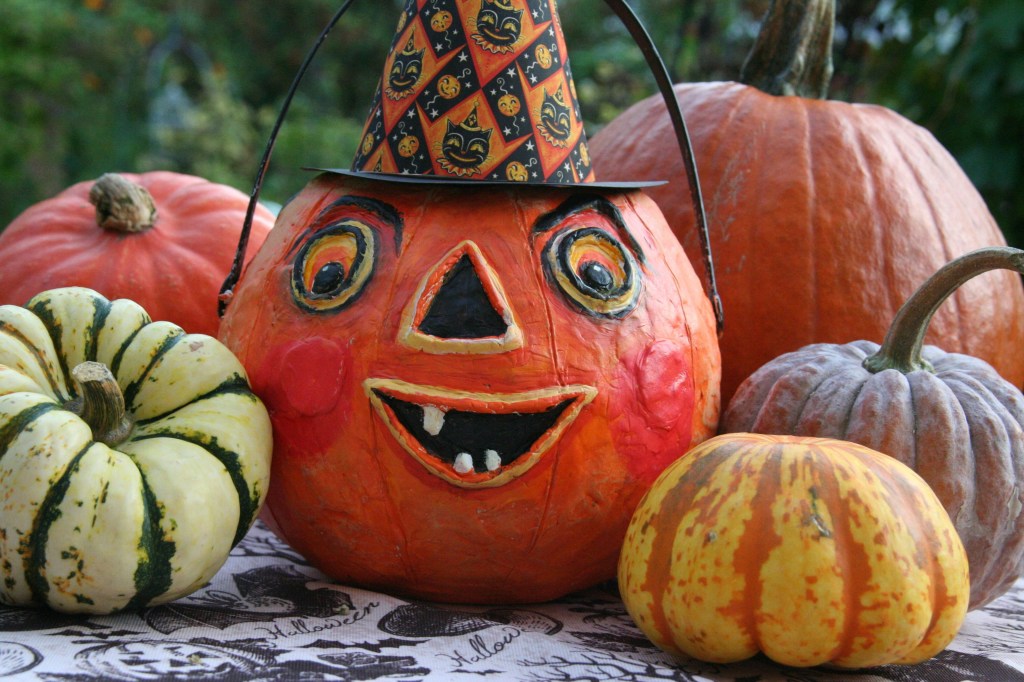
The Golden Age of Ghoulish Collectibles: 1920s-1960s
The mid-20th century marked a significant period in the evolution of Halloween toys and collectibles. This era witnessed a gradual rise in their popularity, reflecting broader cultural trends and technological advancements.
1920s Halloween toys
In the 1920s, Halloween toys and decorations primarily consisted of paper lanterns, alongside other items made from paper mache or crepe paper. These early vintage Halloween collectibles often featured classic Halloween imagery, such as witches, devils, pumpkins, cats, and ghosts, embodying the festive spirit with a quaint charm.
1930s and 1940s Halloween collectibles
As the world moved into the 1930s and 1940s, the economic constraints of the Great Depression in the U.S., followed by the scarcities imposed by World War II, led to a surge in homemade and DIY Halloween toys and decorations. This period saw a shift towards more personal and handcrafted items, as people had to make do with limited resources. Despite these challenges, or perhaps because of them, the creativity and ingenuity in Halloween decorations flourished.
1950s and 1960s Halloween collectibles
The post-war era of the 1950s and 1960s introduced a new phase in Halloween collectibles, marked by the advent of plastic as a key material. Plastic candy containers, jack-o’-lanterns, and figures became prevalent, reflecting the era’s technological advancements and changing consumer preferences. Halloween costumes and décor became more readily available and affordable during these decades, signaling a shift towards mass-produced items.
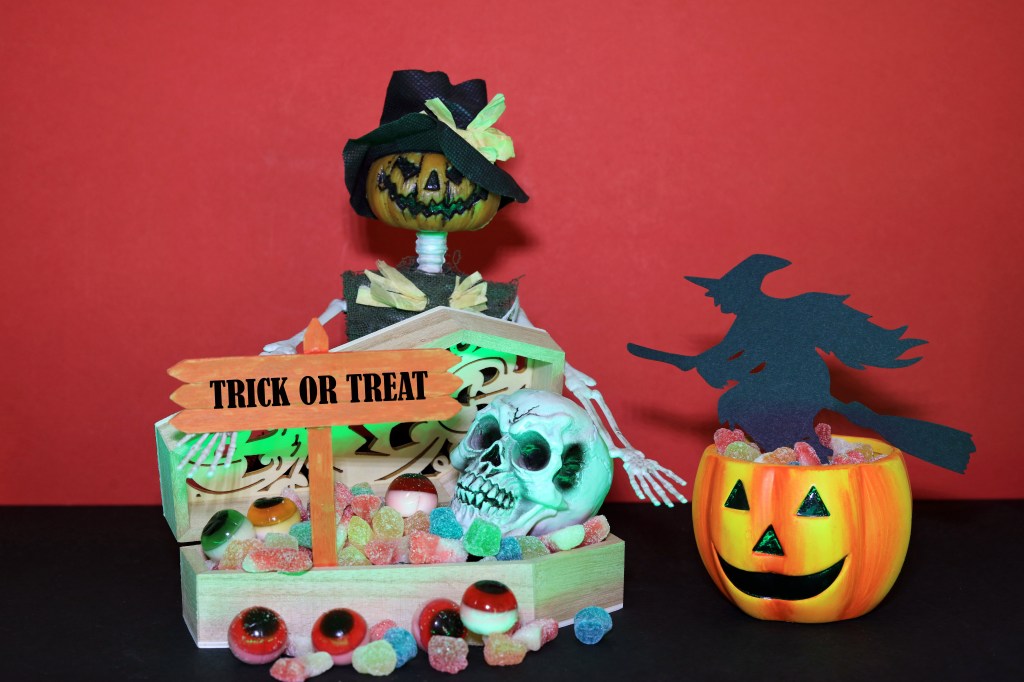
Iconic Halloween Monsters and Figures: Classic Vintage Collector’s Items
Halloween, a celebration rich in tradition and creativity, is synonymous with an array of iconic characters and figures that have transcended their origins to become symbols of the holiday itself.
Timeless monsters of Halloween
Among these, classic monsters have held a special place in the heart of the festivities. With its patchwork of reanimated flesh, Frankenstein’s monster embodies the macabre spirit of experimentation gone awry. Dracula, the quintessential vampire, brings with him the chilling allure of eternal life and nocturnal predations. Wrapped in ancient Egypt’s mysteries, mummies evoke tales of curses and undying wrath. Scarecrows, witches, the Jack O Lantern, and ghosts are staples of Halloween lore. At the same time, the eerie legend of the Headless Horseman rides through the imaginations of both young and old.
Pop culture icons
Beyond these timeless figures, pop culture has introduced its own pantheon of Halloween icons. For instance, the Ghostbusters have become synonymous with the fight against ghoulish threats. Elvira, the Mistress of the Dark, has charmed her way into the role of Halloween’s sultry and witty commentator. Additionally, television families like The Munsters offered a humorous glimpse into the everyday lives of monsters.
The slasher film Halloween introduced the world to Michael Myers, a figure that has become emblematic of the holiday’s darker, more terrifying side. With his nightmarish invasions, Freddy Krueger reminds us of the power of fear itself. Lastly, Michael Jackson’s “Thriller” has immortalized an iconic dance of the undead, forever linking the King of Pop with Halloween celebrations around the globe.
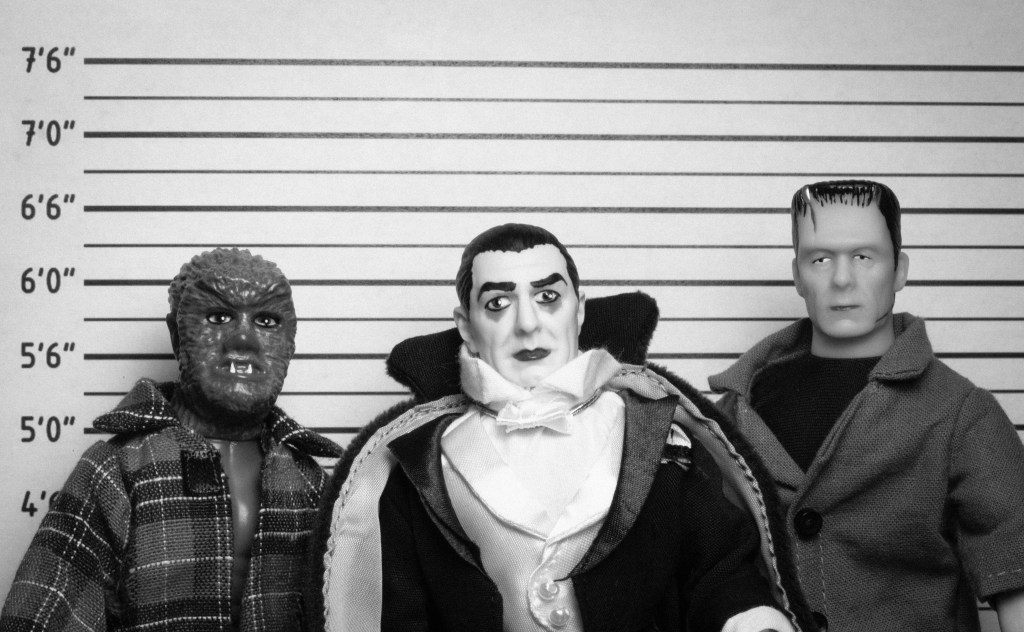
Media and Entertainment: Casting Spells on Halloween Collectibles
Exploring the intricate relationship between media and Halloween toys reveals a fascinating journey that intertwines the evolution of pop culture with seasonal celebrations. Halloween’s portrayal in movies, TV shows, and various media forms has significantly influenced the design and popularity of Halloween toys and collectibles.
Classic Halloween figures
The origins of Halloween costumes in the early 20th century primarily featured classic imagery such as Jack o’ Lanterns, witches, and pumpkins. However, the landscape began to shift around the 1920s and 1930s with the advent of pop culture costumes.
The rise of pop culture in Halloween costumes
Manufacturing companies like Collegeville Costumes, Ben Cooper Inc., and Halco catalyzed this transformation by competing to produce licensed costumes. Cartoon characters, Disney icons, TV show personalities, comic book heroes, and musicians were early iterations of pop culture costumes. Oftentimes, the costumes were a simple mask and a smock made of vinyl or rayon.
By the 1950s, the marketing strategy for Halloween costumes pivoted to target children and families. This era saw TV’s burgeoning popularity serving as a conduit for pop culture to influence Halloween attire. Additionally, this period marked a departure from the simplistic masks and smocks, transitioning towards more form-fitting clothing. Also, the 1970s witnessed the emergence of political costumes, such as the Nixon mask, alongside the influence of pop culture such as Star Wars and the band KISS.
Horror and Halloween
The ensuing decades saw a significant shift towards horror-influenced costumes. These costumes were influenced by classic horror films of the 1970s and 1980s, such as Halloween, Nightmare on Elm Street, and Chucky. This transition underscored the evolving tastes and interests of the public, moving from family-friendly themes to the thrill and intrigue of horror.
A new era of costumes
The 2000s heralded a diversification in costume choices, reflecting the pop culture zeitgeist of the era. This period saw the rise of costumes inspired by Harry Potter, Disney’s Frozen, and the Marvel Cinematic Universe, encapsulating the blending of genres and themes that characterize contemporary Halloween celebrations.
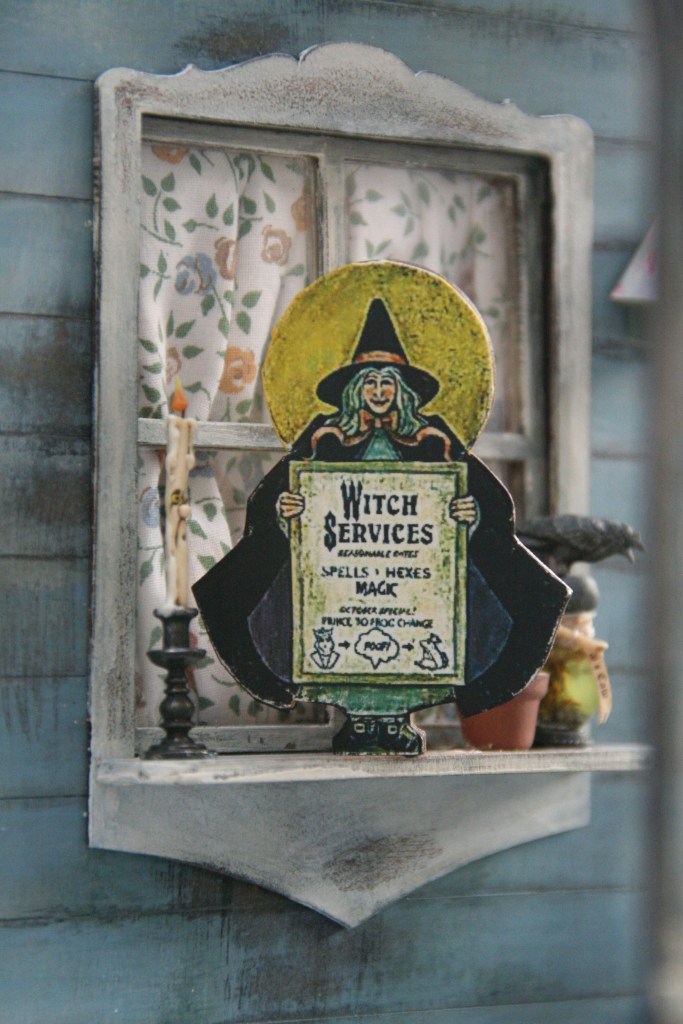
Collecting Haunted Memorabilia: Tips and Tricks for Ghostly Finds to Collect Now
Collecting Halloween memorabilia can be a thrilling pursuit for enthusiasts who cherish the season’s spookiness and whimsy all year round.
Tips for Halloween collectors
Unfortunately, vintage Halloween collectibles weren’t always treasured in the way that Christmas decorations have been, leading to many being mistreated or discarded over the years. Finding a true vintage Halloween decoration is a challenge but is incredibly rewarding for those who are dedicated. When embarking on this hobby, it’s essential to educate yourself about the manufacturers from the past that specialized in Halloween. Familiarizing yourself with their logos is also beneficial, though it’s important to remember that logos and labels can fade or completely disappear over time.
Learning about the materials used in different eras can help distinguish between genuine vintage Halloween pieces and replicas. This knowledge can be crucial in identifying authentic collectibles. Be wary of reproduction pieces and replicas, which can sometimes be mistaken for the real thing.
When it comes to purchasing these vintage Halloween collectibles, timing can be everything. Shopping off-season may yield lower prices but be prepared for possible price hikes during Halloween. Exploring local thrift stores, antique shops, and yard sales can uncover hidden treasures, and online marketplaces like eBay, Etsy, and vintagehalloween.com are also valuable resources for finding unique items.
Setting a budget and adhering to it is important in this hobby. It’s easy to get carried away, so doing your research and knowing the market prices can help prevent overspending. Remember, there’s no need to feel pressured into making a purchase if it’s not within your financial means. Collecting Halloween memorabilia is not just about acquiring items; it’s about preserving a piece of history and celebrating a love for all things eerie and enchanting.

Future Frights: What Lies Ahead for Halloween Toys and Collectibles
As we look ahead, the landscape of Halloween-themed toys and collectibles is poised for some intriguing shifts and innovations.
Integration of IP media with Halloween toys
The future of Halloween toys seems to be increasingly intertwined with intellectual property (IP) media, incorporating Halloween imagery. Picture this: beloved Disney characters donning pumpkin outfits or skeleton costumes. This fusion of mainstream characters with Halloween elements not only broadens the appeal of these toys but also taps into a vast audience eager for themed merchandise that resonates with their favorite media.
Halloween home decor and aesthetic preferences
There’s a noticeable trend towards high-quality home décor items in the realm of collectibles. Retailers like Homesense or Home Goods are becoming go-to destinations for those seeking not just decorations but collectibles that enhance their home’s Halloween ambiance with a touch of sophistication. These items are not just temporary seasonal additions but are cherished for their design and quality, becoming part of the annual Halloween tradition for many.
Collectors’ aesthetic preferences are diversifying, reminiscent of the 2000s, when a blend of styles catered to varied tastes. This eclectic approach allows individuals to curate their collections based on personal preferences, creating a unique Halloween aesthetic that is truly their own. Whether it’s a blend of gothic chic, vintage horror, or modern minimalism, the possibilities are as limitless as one’s imagination.
Pop culture’s influence
Pop culture continues to significantly influence Halloween collectibles, with memes, trends, video games, horror movies, and current events all leaving their mark. This dynamic interplay ensures that each Halloween season brings with it a fresh wave of collectibles that capture the zeitgeist, making them instantly recognizable and highly sought after.
Nostalgia is a powerful force, and there’s a growing appetite for collectibles from the ’80s and ’90s. This longing for the past is seeing a resurgence of interest in iconic figures like Dracula, classic horror movie characters, and even niche subjects that hold a special place in the hearts of collectors.
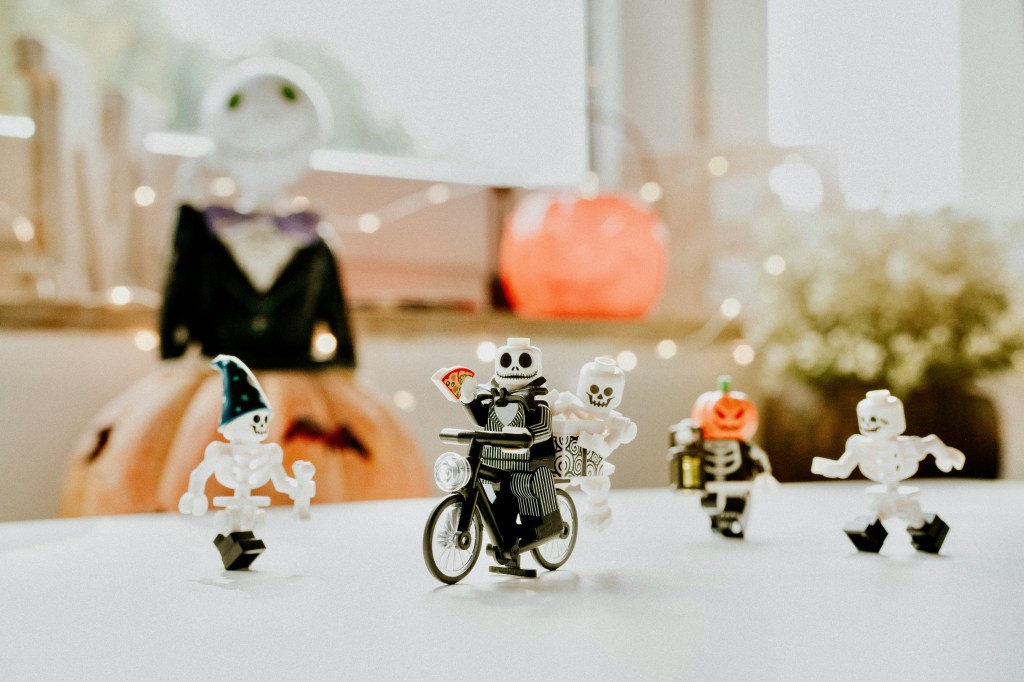
Conclusion: The Enduring Spell of Halloween Collectibles
Halloween toys and collectibles’ lasting appeal and cultural significance are deeply rooted in the holiday’s rich tradition and cultural impact. These enduring vintage Halloween collectibles, from spooky memorabilia to themed toys, capture the essence of the celebration’s legacy, blending the eerie with the nostalgic.
The Halloween toy legacy is more than just seasonal items; it represents a unique intersection of play, horror, and history that continues to captivate people of all ages. This fascination not only underscores the lasting appeal of these items but also highlights their role in preserving and conveying Halloween’s cultural significance through generations.
Sources
https://www.womansworld.com/life/money/vintage-halloween
https://www.vintagehalloween.com/pages/vintage-halloween
https://halloweencollector.com/about
https://www.vintagehalloween.com/pages/vintage-halloween
https://www.antiquetrader.com/collectibles/ten-greatest-halloween-collectibles
https://theartofcostume.com/2020/10/30/halloween-or-hollyween-how-pop-culture-changed-the-holiday/
https://kovels.com/latest-news/5-halloween-things-you-can-collect-now.html
https://halloweenhorrorhaiku.com/2018/05/15/the-who-what-when-where-why-and-how-much-to-spend-on-vintage-halloween-collectibles/
https://kovels.com/latest-news/vintage-halloween-collectibles-are-scary-good.html
https://auctiondaily.com/news/collecting-vintage-halloween-with-category-expert-mark-ledenbach/
About Collectibles Insurance Services
Collectibles Insurance Services has been protecting collections since 1966 and all coverage is provided by a carrier with a group rating of “A” (Excellent) by AM Best, the leading rating agency for the insurance industry.
Comprehensive coverage includes, but is not limited to: accidental breakage, burglary, fire, flood, loss in the mail, theft, natural disasters, and other causes of loss unless specifically excluded from the policy. Deductibles start at $0 for collector policies and we provide coverage for the market value of your collection for losses in excess of $50.
Additionally the protection extends At home and away, and we don't require collection itemization and serial number nor extensive paperwork and red tape.
